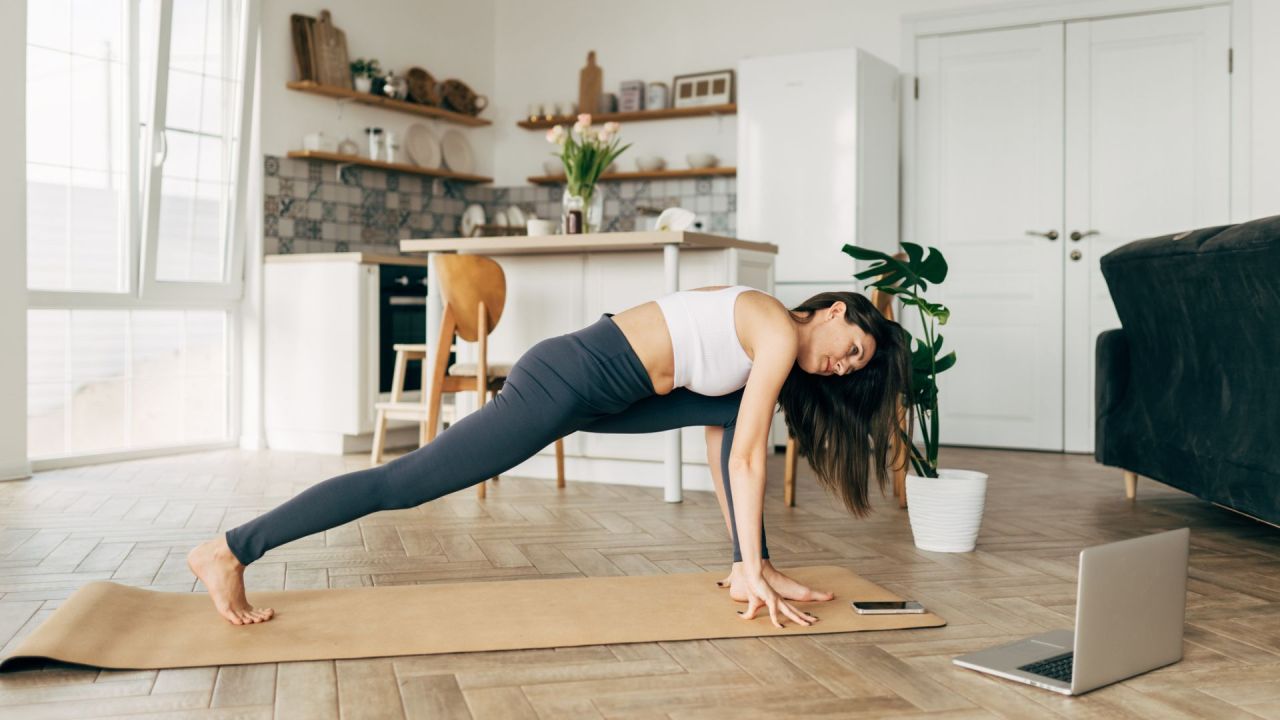The surprising way that Pilates can boost your metabolism
It only takes 20 minutes a day

While it might sound easy, Pilates isn't just stretching - it can have a serious impact on how your body looks and feels, as well as providing you with greater flexibility and ensuring your metabolism is firing on all cylinders.
While you’ve no doubt heard the term 'metabolism' bandied around before, you might not know exactly what it means.
So what is our metabolism and what is it responsible for?
Put simply, our metabolism is the process in which our bodies break down and convert food into energy, and harness that energy to power our bodies. Our base metabolic rate is the speed at which our body burns calories during a rest state.
Basically, it’s a combination of what, when and how we eat as well as how we move and sleep that impacts our metabolic rate and ability to convert food into energy. Exercise is an essential part of this picture and plays an important role in supporting a healthy metabolism.
While you might associate metabolic-boosting exercise with HIIT and cardio, a balance of cardio, functional movement and strength training is essential to increase muscle mass which increases the rate at which our body burns energy between workouts.
Bursts of cardio will burn energy quickly, whereas strength training ensures we are burning energy over a prolonged period.
And that’s where Pilates comes in. Pilates integrates high-intensity, low-impact movements to build strength and increase your heart rate, without impacting your joints.
According to Fluidform Pilates founder, Kirsten King, practising just 20 minutes of Pilates a day will help you achieve the benefits of both cardio and strength training for your cardiovascular health, muscle development and energy – all of which fuel a healthy metabolism.
“No matter your metabolic rate, fitness level or health, Pilates has the ability to challenge all bodies by activating and fatiguing our muscles to build strength and tone,” she tells Body+Soul.

King says our focus should be on slow and controlled movements which target our slow twitch, stabilising muscles. Why? Because strengthening these muscles helps to support our balance, posture and joints to move efficiently and minimise our risk of injuries and imbalances.
“Strengthening and conditioning our muscles increases our muscle mass, which increases the rate at which our bodies convert food into energy between your workouts,” she explains.
“A low muscle mass slows this process, which may result in weight gain. Put simply, a calorie-burning workout helps to burn energy on the mat, but a strength-focused workout affects our ability to convert food into energy during our rest and recovery time.”
While both are equally important to support our metabolism and sustain a high metabolic rate, lifestyle factors also come into play.
When it comes to your metabolism, like most functions of the body, it requires a holistic approach across all aspects of your life to support and sustain. In conjunction with a workout routine, a balanced diet and quality sleep are essential to improve our metabolic rate between workouts, especially for those with a slower metabolism.
“If you do have a slower metabolism, I would recommend incorporating Pilates with a varied mix of cardio-based workouts including skipping, boxing, fast walking, sprints or swimming. Other lifestyle factors like cleaning up your diet and prioritising your sleep will also have a major impact.”

How to maximise Pilates for weight loss
According to King, there are some simple and effective ways in which we can support our body's ability to convert foods into energy including:
Increasing your protein intake. A higher protein intake has been shown to significantly boost metabolism and increase the number of calories you burn.
Nourishing your gut microbiome. Eating a variety of fruits, vegetables and probiotics as well as limiting processed foods and allowing your digestive system to rest between meals will have a positive impact on your gut.
Prioritising a restful night’s sleep. Getting a good night's sleep helps boost your metabolism in several ways, from lowering the production of ghrelin (often known as the ‘hunger hormone’) to increasing your body's energy.
Eating regularly and mindfully. This will help to kickstart your digestive system and stabilise your hormones (also don’t skip meals, this does your metabolism no favours).
Moving your body. Any exercises which elevate your heart rate will effectively burn energy and calories.
Working out during winter. Try working out in the cold! Your body will burn energy faster in order to keep warm.
Originally published as The surprising way that Pilates can boost your metabolism



